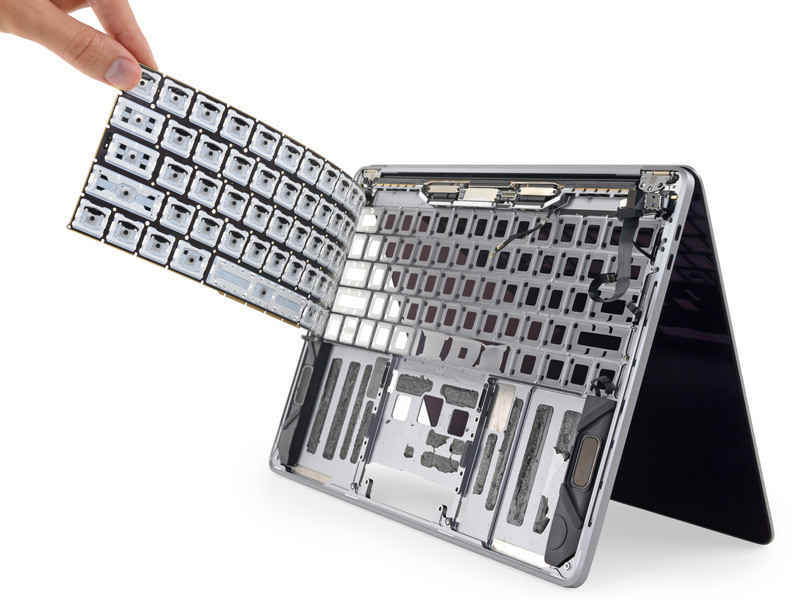

The MacBook Pro line starts at $1,799 for the 13-inch model and $2,399 for the 15-inch version. Most of the specs for the new laptops with otherwise remain unchanged. The iPhone maker's updated specs only apply to the Touch Bar models, so the non-Touch Bar MacBook Pro isn't getting a refresh, yet. Apple says the computers should run two times faster than a quad-core MacBook Pro and get 40% more performance power than a 6-core MacBook Pro. The new 13- and 15-inch MacBook Pro models feature Intel's most powerful 8th- and 9th-generation processors.
#Problems with new macbook pro keyboard mac#
The latest Mac notebooks, available for purchase now, will be faster than previous generations and feature slightly redesigned keyboards.

A majority of user complaints reportedly concern the 15-inch MacBook Pro, though similar issues have been reported from owners of the new 13-inch model. In addition to the new keyboards, Apple updated its MacBook Pro lineup. It’s unclear how wide-spread the issue is.

'Apple Watch or it doesn't count': How tech addiction might be ruining your workoutĭying for the photo: Perfect selfies are all over Facebook, Instagram and Snapchat. Last month, Apple confirmed that keyboard issues were affecting a "small number of users" and "for that we are sorry."
#Problems with new macbook pro keyboard for free#
Now the laptop fixing program covers anyone who bought a new laptop within the last four years, including its latest models shown Tuesday.Īpple also said it has changed the material used in its butterfly switch keyboards to avoid the problem of letters double-typing, but didn't share any details about the new materials.Įligible MacBooks will be serviced for free and Apple is working to speed up the turnaround time, the tech company said. On Tuesday, the iPhone giant not only unveiled two new MacBook Pros, but the company also says it will start replacing some used keyboards for free to correct issues with "characters repeat unexpectedly" and keys that feel "'sticky' or do not respond."Īfter receiving complaints from customers about unresponsive keys, Apple updated its Keyboard Service Program for MacBook, which once only covered laptops released from 2015 to 2017. Hopefully the company extends that solution to future MacBooks as well-and eventually acknowledges why it exists in the first place.If you've been having issues with sticky keys on your MacBook Pro, you're far from alone.Īnd Apple is doing something to fix the problem. Regardless of how Apple frames its new keyboard, it clearly helps keep dust out and solves a vexing problem. But any more thorough solution would likely have required a total redesign of the keyboard, and of the MacBook Pro generally, rather than strategic tweaks. Pouring sand over the keyboard-don’t do that at home-caused a few keys to seize up right away in iFixit’s tests. We used to break those a lot, even being careful,” says Suovanen. Just going off of feel, I would guess that they changed the dimensions very slightly, and/or maybe the composition of the material they’re using for the clips. “The measurements are very, very slightly different.

But iFixit found it could get them on and off on the new MacBook Pro without a hitch. Failing that, an entirely new unit might be needed, since removing individual keycaps risked damaging the underlying mechanism. Previous-generation keyboards were difficult if not impossible to repair Suovanen says Apple’s strategy was to hold the laptop at a 45 degree angle and hit it with compressed air. “I definitely think it’s going to reduce their headaches going forward, and certainly consumer headaches.”Īpple also appears to have done itself a favor in terms of repairability. “It’s not 100 percent effective at keeping debris out, but it’s pretty good,” says Suovanen. Specifically, a thin layer of silicone now sits above the keyboard’s butterfly mechanism-a protective layer that, yes, might make typing a little quieter, but definitely keeps more particles out. While Apple has offered to fix any affected keyboards for free for the next several years, the new MacBook Pro appears to be its first attempt at a design-based fix. While Apple has previously downplayed the extent of the problem, it’s pervasive enough to have inspired three class action lawsuits, and prompted a rare acknowledgement from Cupertino last month that something is amiss. Debris gets under the keyboard and has no way to get out again, resulting in unresponsive keys. But a detailed teardown completed by repair site iFixit Thursday shows a much more likely catalyst: keeping out dust and other particles, so that the keyboard won’t break.Īpple’s previous keyboard design (found on MacBooks dating back to 2015 and MacBook Pros from 2016 until this most recent version) has been prone to key failure. It also introduced a new keyboard design, purportedly to make things quieter. When Apple introduced its new MacBook Pro last week, it didn’t just infuse it with faster processor and more RAM.


 0 kommentar(er)
0 kommentar(er)
